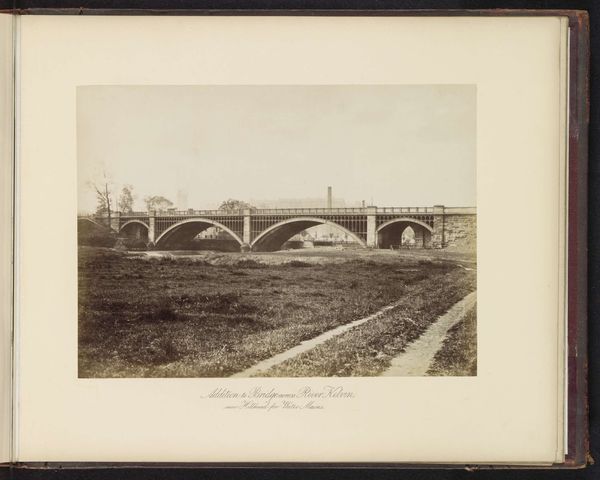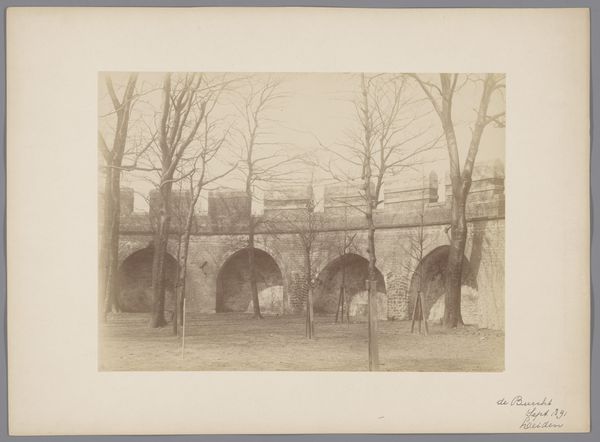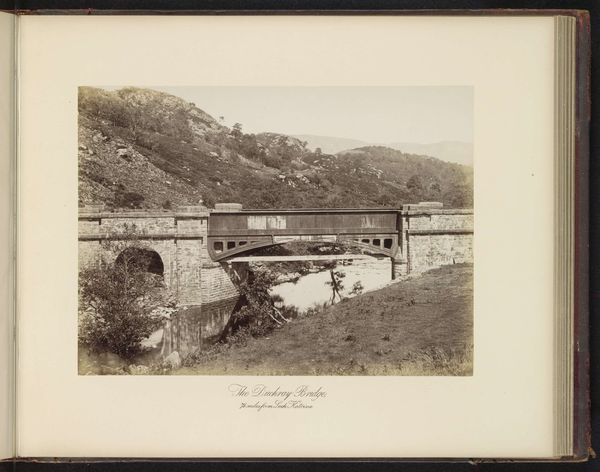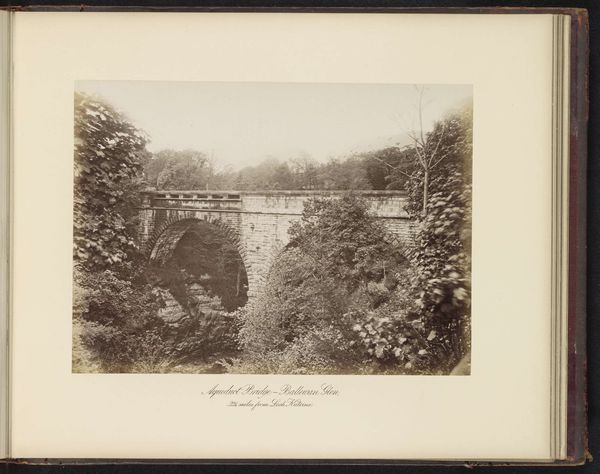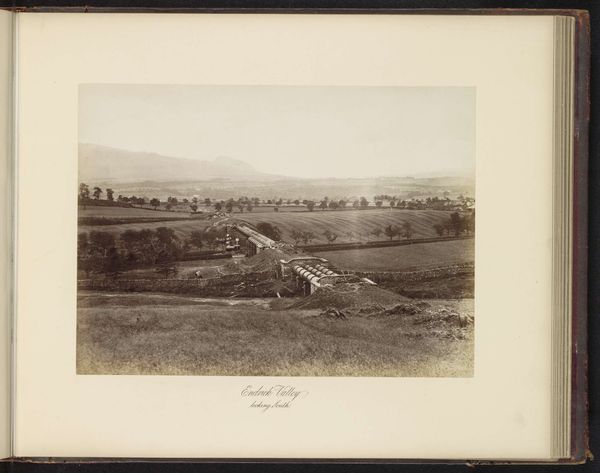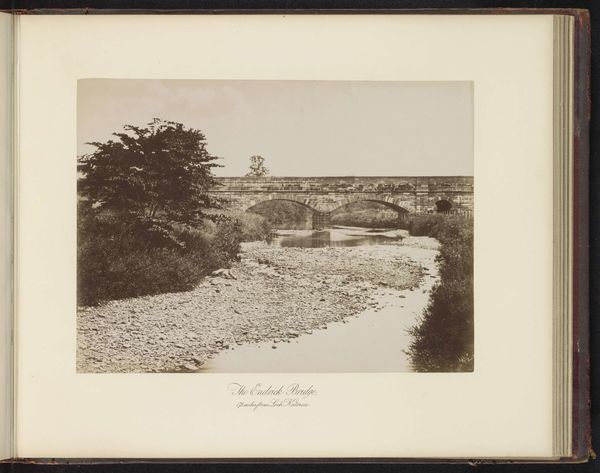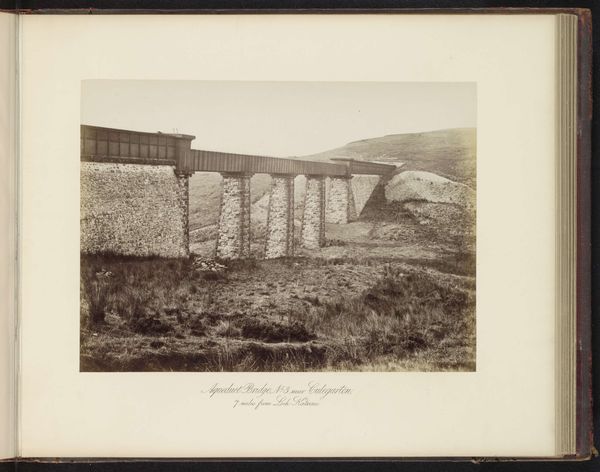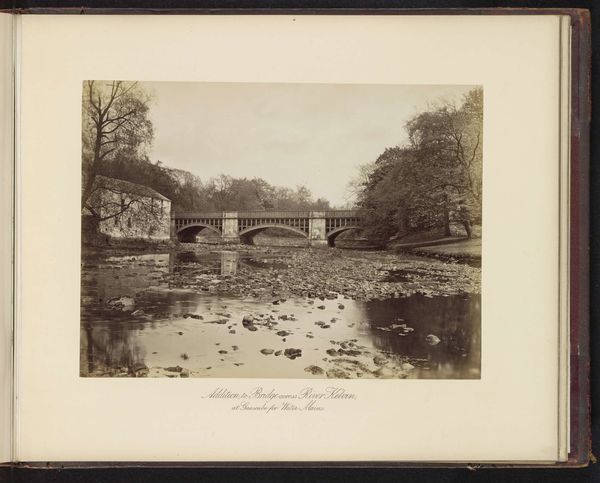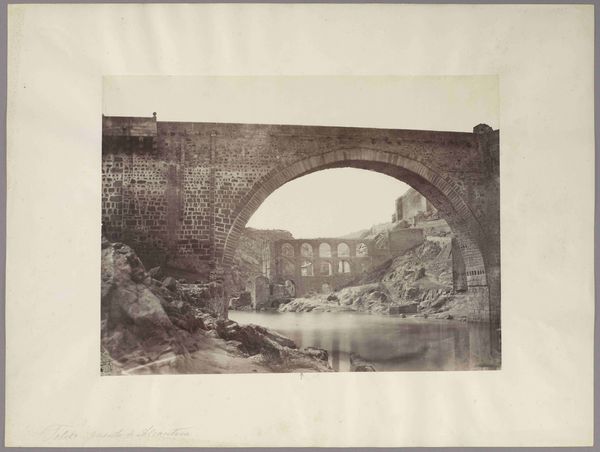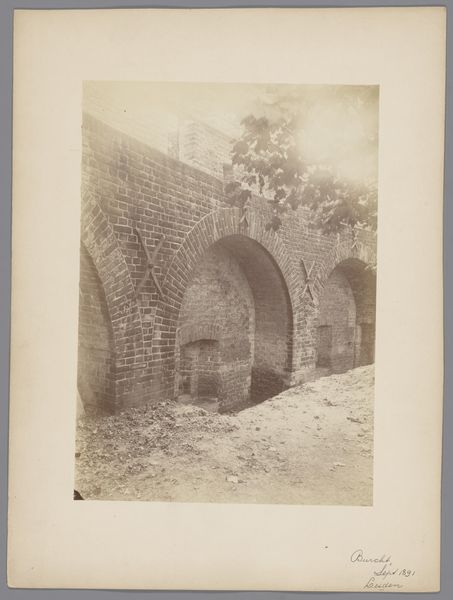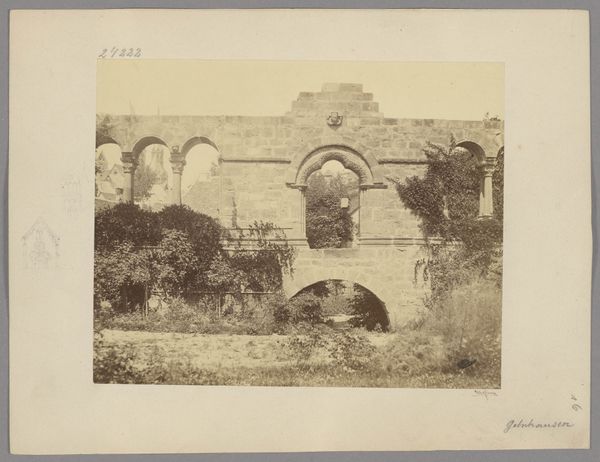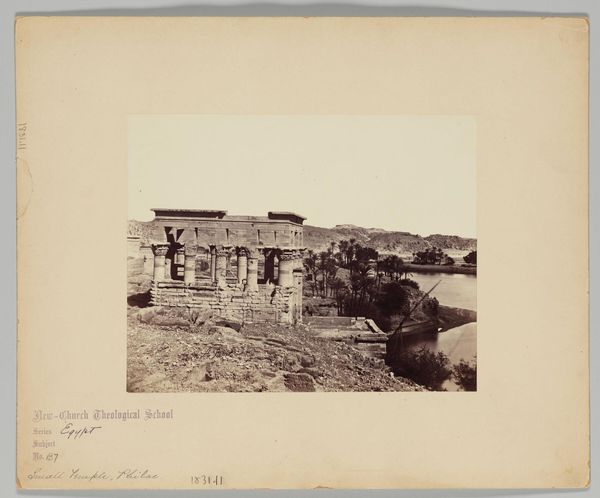
photography, gelatin-silver-print
#
landscape
#
photography
#
gelatin-silver-print
#
realism
Dimensions: height 203 mm, width 277 mm
Copyright: Rijks Museum: Open Domain
Editor: Here we have T. & R. Annan & Sons' gelatin silver print, "Aqueduct Bridge near Killearn, 19 miles from Loch Katrine," dating from before 1889. It feels like a very tranquil, straightforward landscape. What do you see in this piece, especially given the context of its time? Curator: Beyond its picturesque qualities, I see a powerful statement about 19th-century infrastructure and its impact on the Scottish landscape. Consider the socio-economic context: this aqueduct wasn’t just about water; it represented progress, industrialization, and the channeling of resources, often at the expense of rural communities. Do you see how the bridge, while seemingly harmonious with the land, also imposes a structure of control upon it? Editor: That’s interesting, I hadn't considered the element of control. So, it's not just a pretty scene but a document of societal shifts? Curator: Precisely! This photograph prompts us to think about whose water was being channeled, for whom, and at what cost. Consider how the building of the aqueduct changed the relationship between those in Glasgow and those living near Loch Katrine. Editor: That's a different way of approaching landscape photography. It encourages a critical viewing. Curator: Exactly! Art, even seemingly simple landscapes, can reveal complex narratives of power, progress, and the often-unequal distribution of resources within a society. We must consider not just the aesthetics, but also the social and political implications embedded within the image. Editor: I see it now. Thanks. I’ll definitely think differently about landscape photography from now on. Curator: My pleasure. Keep questioning what you see, and consider whose stories are being told—and whose are being left out.
Comments
No comments
Be the first to comment and join the conversation on the ultimate creative platform.
